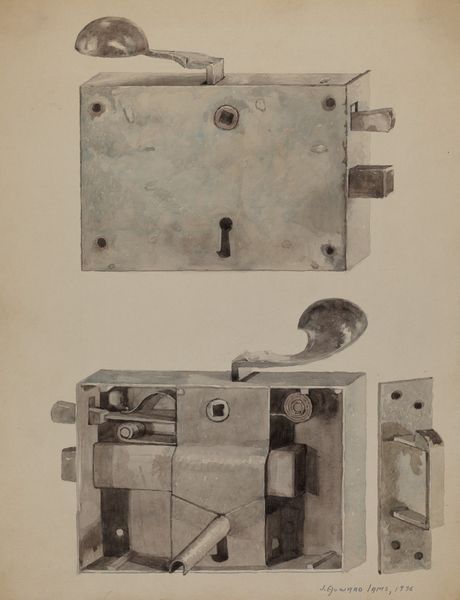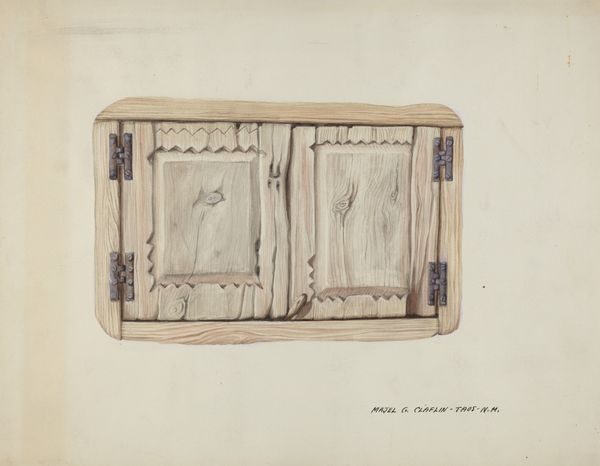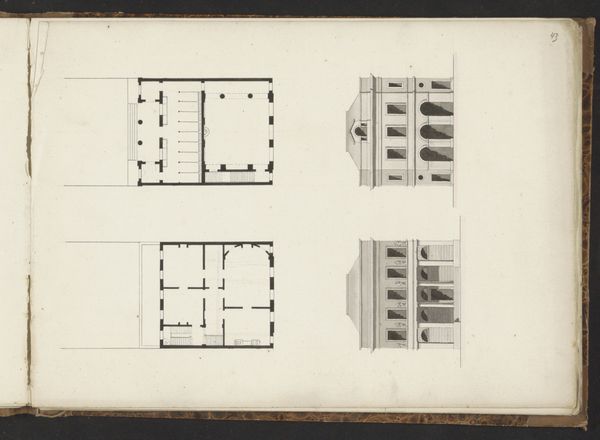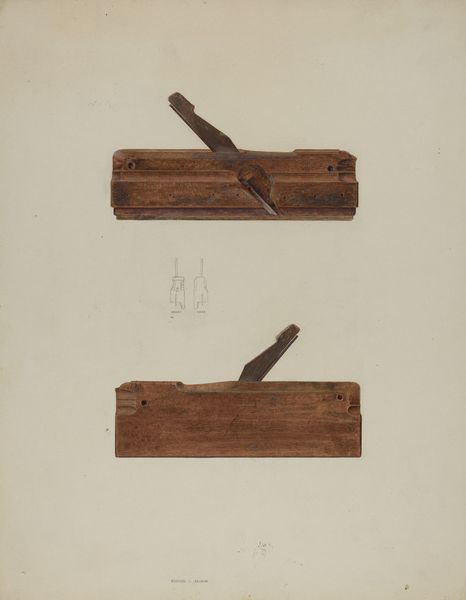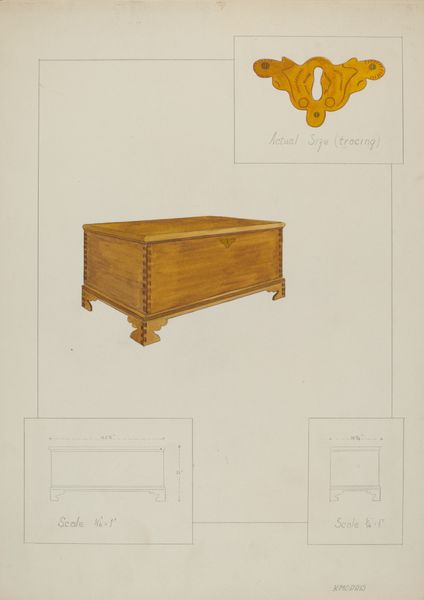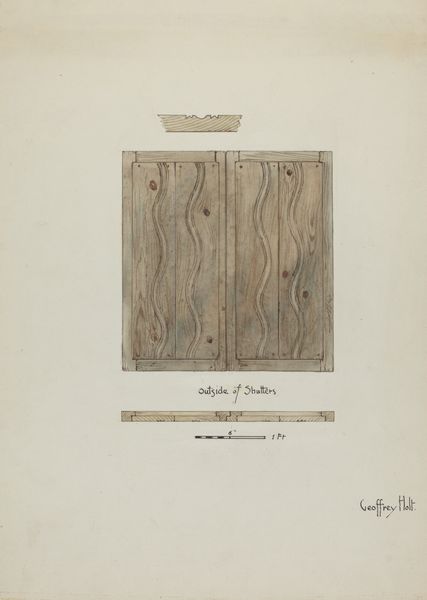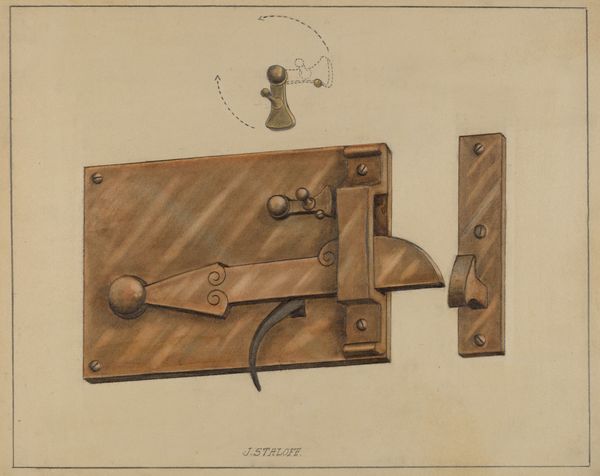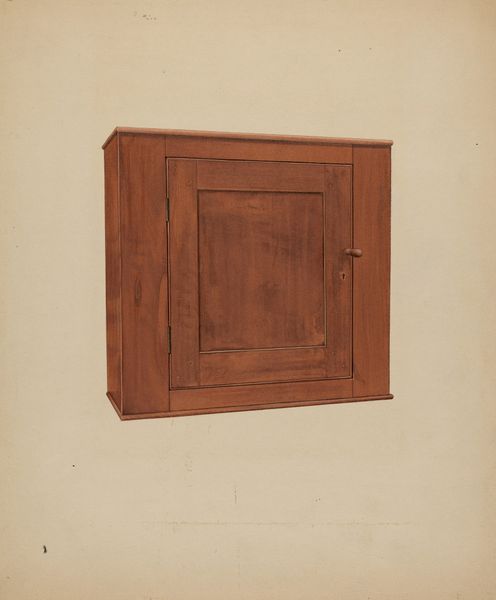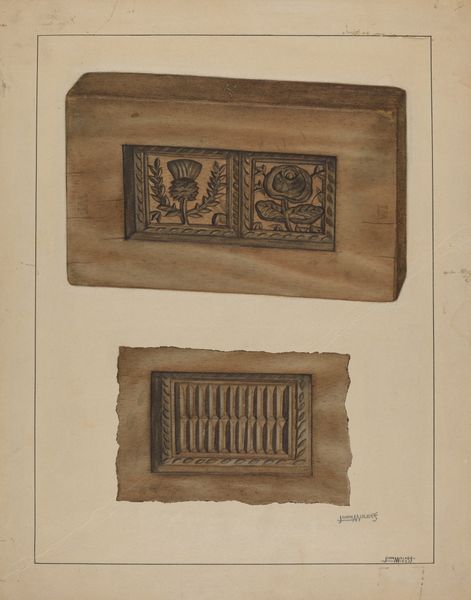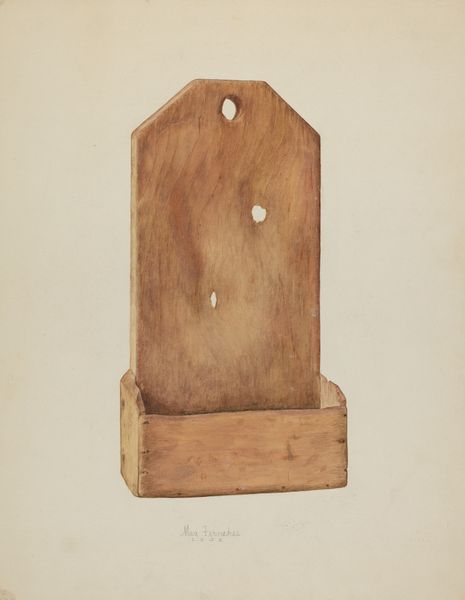
drawing, watercolor
#
drawing
#
watercolor
#
watercolour illustration
#
academic-art
#
watercolor
Dimensions: overall: 35.4 x 27.9 cm (13 15/16 x 11 in.) Original IAD Object: 8" wide; 4 5/8" high
Copyright: National Gallery of Art: CC0 1.0
Curator: Here we have J. Howard Iams' watercolor drawing, "Lock," created around 1936. What are your first impressions? Editor: The starkness is striking. Two views of a wooden lock rendered with such exacting detail in watercolor feels almost clinical. There’s a vulnerability in exposing its inner workings like this. Curator: Iams made technical drawings of objects that resonate on multiple levels. Looking at this work now, it's difficult not to think about issues of access and restriction in a broader sense, the politics inherent in who holds the key, both literally and metaphorically. Editor: Exactly. And the rendering itself reveals so much about its construction, doesn't it? Look at how the wood grain is meticulously illustrated. We can see the craftsmanship involved, the labor embedded within its materiality. Even the screw placement, seems almost brutal in its functionality. Curator: It's fascinating how he chose to depict both the exterior and interior views, as though wanting to demystify the very notion of security, to show the mechanism behind the barrier. I wonder if there was a deliberate social commentary about class and access at play in selecting the subject. Editor: It could also be an appreciation of functionality. Locks secure and protect; they are vital tools. But look at the shadows—even a tool, so fundamentally practical, acquires this aura of almost stark solemnity through light and medium. Watercolor adds unexpected softness to an object defined by rigid, pragmatic utility. Curator: Absolutely, that tension is potent. Considering Iams was drawing this during the Depression, the implications of security, both having it and lacking it, would have carried significant weight and could have easily shaped the artist's intentions behind depicting an object centered on issues of security and barring. Editor: Well, it certainly prompts considerations of value—monetary, functional, symbolic—what we protect, and how those protections are built and maintained. The very act of artistic examination asks questions about function versus representation. It prompts discussions of materiality. Curator: Indeed. Examining this, as well, emphasizes how objects, like this seemingly straightforward lock, encapsulate intricate narratives about access, labor, and the societal constructs we use to define ourselves. Editor: Right. The lock—at once utterly commonplace, and a powerful symbol laid bare, materially, and structurally in plain view.
Comments
No comments
Be the first to comment and join the conversation on the ultimate creative platform.
